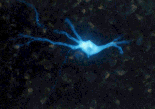| Sponsored by Wake Forest University School of Medicine and National Families in Action | |||
| Glossary - M | |||
| This glossary comes from False Messengers: How Addictive Drugs Change the Brain, by David Friedman, PhD, and Sue Rusche, Harwood Academic Publishers, Amsterdam, The Netherlands, 1999. A
| B | C
| D | E
| F | G
| H | I
|
|
|||
| M Maintenance treatment Treatment for opiate addiction that involves giving the addict a synthetic opiate (methadone or LAAM) to prevent the withdrawal and craving that often provoke relapse. Maladaptive behaviors Behaviors acquired by drug users that hinder them from succeeding in the normal, non-drug-using world. Marijuana A psychoactive drug made from the leaves of the cannabis plant. It is usually smoked but can also be eaten. See Cannabis. Marinol The trade name of dronabinol, a synthetic version of THC used as medicine. MDA One of several hallucinogenic "designer drugs" with psychedelic properties that are manufactured by basement chemists. MDMA (Ecstasy) A hallucinogenic "designer drug" with psychedelic and stimulant properties. Mescaline A naturally occurring hallucinogenic drug that acts on the serotonin receptor. Messenger ribonucleic acid (mRNA) A molecule that carries the genetic code from DNA to the parts of the cell that use the code to make components of the cell. Metabolic enzymes Enzymes that break down or inactivate drugs in the body; also, enzymes that break down food and produce energy. Metabolic tolerance The body's increased ability to eliminate a drug, thereby making a given dose less effective. Metabolism The processes by which the body breaks things down or alters them so they can be eliminated; also, the processes by which the body extracts energy and nutrients from food.
|
|
Metabolites The products that result when enzymes in the body break things down or alter them to produce energy or eliminate them. Methadone A long-lasting synthetic opiate used to treat cancer pain and heroin addiction. Methamphetamine A commonly abused, potent stimulant drug that is part of a larger family of amphetamines. Microsomal ethanol oxidizing system (MEOS) Liver enzymes that metabolize many drugs, including alcohol. Mind The container of the contents of consciousness, what we call the results of our processes of perception, thinking, and feeling. The mind is the manifestation of consciousness. Morphine The most potent natural opiate compound produced by the opium poppy. Motivation The internally generated state (feeling) that stimulates us to act. The neural substrate for motivation is most likely found in the brain reward system. Motor cortex The part of the cerebral cortex that creates the commands that make the muscles move. Motor neurons The neurons that control our muscles. MPTP A neurotoxin found in a "designed" opiate called "China white," which kills the neurons that make dopamine, producing a set of symptoms that look like Parkinson's disease. Myelin sheath A covering made of a special
fat that encloses a neuron's axon and allows it to transmit action
potentials.
|
|
| Home | For Journalists | For the States | Science Update | Links | Glossary | About |
Last Revision
info@addictionstudies.org

